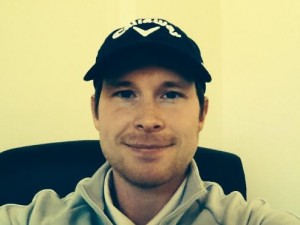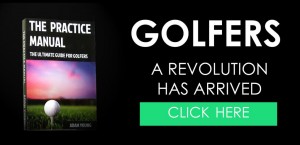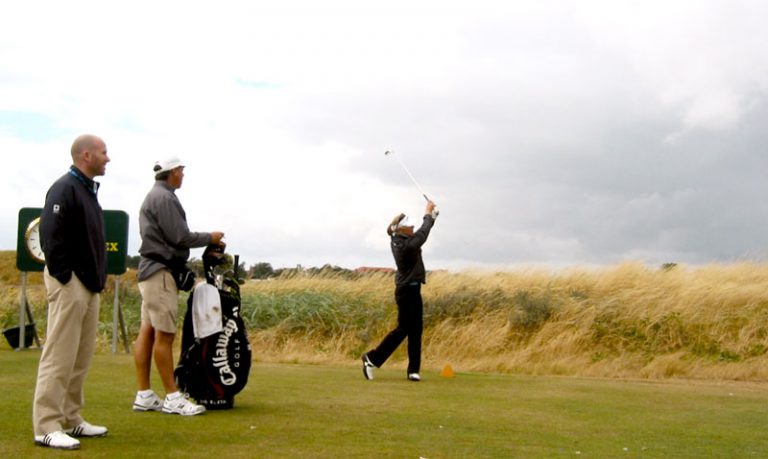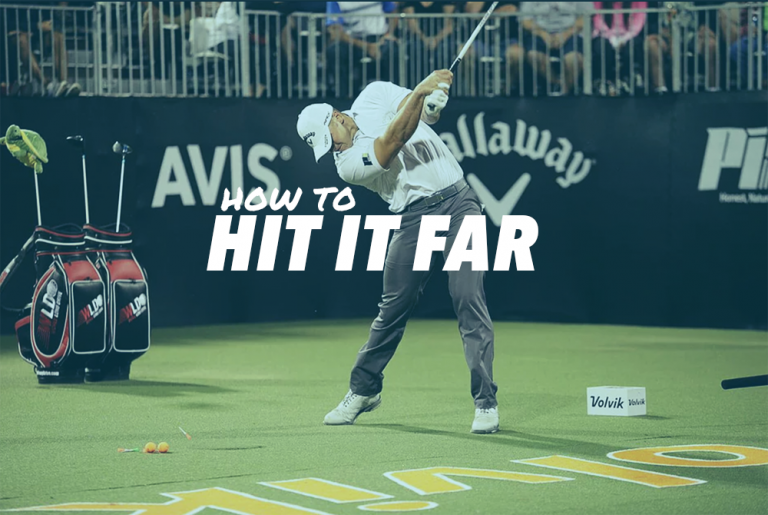[vc_tta_accordion active_section=”2″ collapsible_all=”true”][vc_tta_section title=”Read the entire transcript here…” tab_id=”1467515309632-8370c100-96d2″][vc_column_text]
Hi Cordie, it’s Adam Young here, just giving you some thoughts on the notes you sent me with Dr. Bjork; so I agree completely with what he was saying about learning versus performance. All the research that I have seen myself and done myself supports this idea that learning and performance are often not the same thing. It’s not always the case but some of the things that can because the biggest decline in performance can also lead to greater long-term learning and the reverse is true also. Sometimes, people can be performing really, really well during a lesson or during a practice session and the actual retention of learning or ability to transfer that to the golf course is completely gone.
So, you know, this goes into instructing a little bit and we can fake learning during a lesson if we make a pupil stand there with a 7-iron, hitting to the same target over and over again, then they are going to be performing pretty well. But is that actually going to be transferable? Is that going to retain? And the answer to that is often not. It’s going to be a much lower rate of retention. But that’s not to say that we shouldn’t do that; as instructors, we have to balance out the expectation levels of the pupils as well as what is good for them. If we just did what was good for a pupil, we’d have them all random practicing most of the time. It’s not always the case. So some examples where that’s not true maybe if we are new to a person, then we might want them to stay in block practice mode just until they get accustomed to it.
So in the early stages of learning that’s okay and it builds confidence too, which is important for a person to feel like they are learning at least. But once they get to a certain level, then we want to switch over to a more random practice. So once the mode of program is there, or built, we want to start improving our access to it and that’s when random practice comes in. But that’s difficult because people don’t understand it, it’s in our culture and I think most people instinctively feel that if they are performing well, then they are learning and so changing that mindset is going to be the biggest battle for the industry I think. So you know, I do a lot of writing on it, do a lot of blogging on it, to try and convince other people and try to help them understand the efficacy of it.
So moving on to your question about how we feel after practice, so often people will predict their future learning based on their performance at the time. So if someone is just performed really well in a practice session, they will predict whether they will go out on a golf course and perform really well whereas we know that’s often not the case. It actually comes down. And that can be a big problem because if you walk on to the golf course with expectations that are very high and suddenly you perform average or a little worse than average, then that disparity between your expectation and reality can create a big knock in confidence and then that can set off a cycle of “What am I doing?” A little bit of self-doubt, “What went wrong?” which would start over-thinking, which then leads to a poor performance on the golf course. So that’s where a high performance on the range can really have a negative effect on the golf course.
The reverse is also true in that if you get someone to random practice on a range or during a lesson, then their performance will usually be a lot lower, maybe even lower than normal and this will lower the expectations of a player. And although they may feel, at the end of a session, come off a little deflated, “Okay, I haven’t got that” or they think they haven’t got that, when they go on to the golf course and start performing average, their mindset is a little different because they are performing better than their expectations and they go, “Oh, that’s a little better” and that allows the confidence to raise. So how you perform on the range and how you perform on the course, you need to balance all these things like your expectations levels, your confidence levels and the performance levels.
A lot of this goes into the topic of task difficulty; so if you set more difficult tasks for your pupils, that will then tend to create lowered performance but increased learning. However, everybody is individual and you are also having to balance the personality of the player in front of you; so some players will get very demoralized by having a task that’s set too difficult for them and that can actually hider learning in itself in that the confidence gets so low that the player gives up, their mindset flips over. The reverse is true also; if a task is too easy, that is not a challenge to a player, the learning is completely dropped. So I normally as a general rule, I stick to a three to a seven out of ten success rate.
So if someone is achieving a seven out of ten success rate in the task that I have set them, I will consider it too easy and I would increase the difficulty incrementally by adding another constraint to it, or adding some level of difficulty. And the reverse is true if someone is only getting three out of ten; I would normally lower the difficulty level of that task so that it encourages confidence and a feeling that the player is learning.
So practically what are some of the things that can lower performance but increase learning? Well, different ways of playing this could be varying targets; rather than hit into the same target over and over again, change it to the right side of the range, left side of the range, a little further, using different clubs also, or even hitting different shapes. So there are two different forms of practice which I would consider random or more random, and they are Variability Practice and Differential Practice.
So Variability Practice is doing something that you want to do but in different ways. So this could be hitting your target but hitting it in different ways such as shaping it right to left, left to right, high or low, so you are achieving a target with a different trajectory. You could also try to hit the sweet spot by standing different distances from the ball, such as standing too close to it and hitting it on the sweet spot, standing further away from it and hitting it on the sweet spot or even addressing while hovering the club or having it lay down on the ground. It might be nothing that you settle on eventually when you go to achieve maximum performance but it helps you in learning coordination and lot of other things also.
Differential practice, that’s a strange one and that is showing promise, but this is practicing things that you wouldn’t normally use at all. They could even be incorrect things such as trying to hit the toe, or trying to hit the heel, or maybe hitting as big a hook as you can, or as big a slice as you could. So you may never use these on the golf course but they improve your ability to coordinate things so when it comes back to calibrating what you want, you have an increased ability to do that. Again, if you want someone toeing the ball and heeling the ball, you would assume, based on their core performance, that couldn’t be further from the truth.
In fact, I have done my own study where I got a couple of groups; one tried to hit the center of the face over and over again and one group tried to hit the toe and the heel. The ones that were trying to hit the toe and the heel are the differential practice group. After five days, they outperformed, in terms of ability to hit the center, the group which was trying only to hit the center. So if you have a look at their performance of those two groups during those two days or during the five days rather, you would assume that the ones that were trying to hit the center were learning more because they were performing better. But it flipped and it flipped – it took about five days to flip which again shows the long-term outlook with regards to learning. You can’t often see learning, it has to be inferred over, over few days or weeks or months.
[/vc_column_text][/vc_tta_section][/vc_tta_accordion]
Adam Young
 Adam has studied everything from motor learning research to brain function. He combines knowledge in many different fields to make a more coherent picture of the golfer. Adam possesses a sound understanding of the technical elements of the swing, yet understands that great golf is much more than just the way you swing the club.
Adam has studied everything from motor learning research to brain function. He combines knowledge in many different fields to make a more coherent picture of the golfer. Adam possesses a sound understanding of the technical elements of the swing, yet understands that great golf is much more than just the way you swing the club.
Adam currently teaches golfers the importance of developing skill as well as technique, and builds their games as a whole – including strategic and psychological strength. Adam’s theories are cutting edge, utilizing much of the newest research in the field of learning. He presents them in an easy to understand way that will make you revolutionize how you learn the game.
Adam has worked at some of the top facilities in the world, including the Leadbetter Academies and the World famous Turnberry Resort. He currently teaches at one of Europe’s most prestigious resorts in La Manga Club, Spain. He is also Author of “The Practice Manual: The Ultimate Guide for Golfers”, a bestselling Golf book on Amazon.
Adam Young’s Website and Blog
Adam on Twitter




